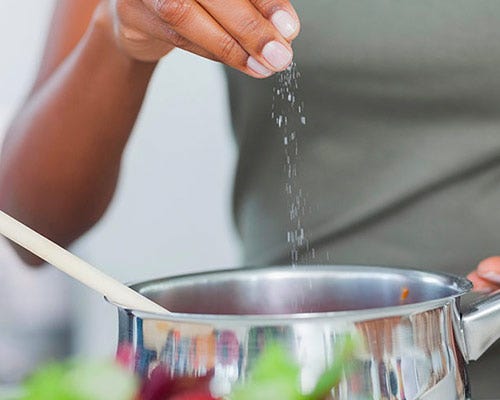The Lowdown On Six Ways To Lower Your Cholesterol
- 2/6/18


by Tracey Pollack
If you have been looking high and low for ways to lower your cholesterol, you’re not alone. High cholesterol is one of the most common health problems today. So what is cholesterol? There is LDL (bad) cholesterol and HDL (good) cholesterol. LDL cholesterol encourages a waxy plaque to build up in your arteries, which can lead to heart disease and other conditions. HDL cholesterol clears this plaque from your arteries and removes it from your body, which reduces your risk of these problems. Together, these form your “total” cholesterol levels. The way to improve your overall cholesterol is make changes that lower your LDL levels and raise your HDL levels.
Luckily, you can easily make these changes and lower your cholesterol with these six switches and swaps.
Tip the Scale in Your Favor
Extra pounds increase your odds of having high LDL cholesterol levels and can lead to the development of heart disease, so you shouldn’t wait to lose weight. But you don’t need to lose a lot to improve your cholesterol levels. According to Healthline, any weight loss can increase your HDL cholesterol, while decreasing LDL levels. No matter how much you want to lose, start by making small changes. Reach out to a friend when you’re upset instead of reaching for Ben & Jerry’s. Munch on fresh fruit or vegetables instead of chips or cookies. And park at the farthest spot in the parking lot to sneak in a bit more activity. All of these little changes can add up to big results.
Get Your Fill of Fiber-Rich Foods
Fiber is your friend when cholesterol is the enemy, so reach for foods that are full of soluble fiber. Just be aware that fiber comes in different forms, with one called soluble fiber and the other known as insoluble fiber. While both are good for your heart, it’s soluble fiber that’s great for your cholesterol. In addition to making you feel full, soluble fiber can actually reduce the amount of cholesterol your body absorbs. According to the Mayo Clinic, eating at least five to 10 grams of soluble fiber each day can lower both your LDL and total cholesterol levels. So better fill up your kitchen, along your body, with fiber-filled foods.
Can the Trans Fats
Trans fats increase your LDL cholesterol, reduce your HDL levels and raise your risk of developing heart disease, stroke, diabetes and other chronic conditions. Trans fats lurk in fried foods, stick margarine, cookies, crackers, cakes, pie crusts and frozen pizza. Today, some food manufacturers are removing them from their products, but the only way to tell if a product is trans fat-free is to read labels while you’re shopping. Avoid products that list “partially hydrogenated oil” in the ingredients, since this is just a sneaky name for trans fats.
Face the Facts On Fats
An easy way to make the switch from trans fats is by replacing them with unsaturated fats, which don’t increase your LDL cholesterol, according to WebMD. Unsaturated fats are found in olive oil, canola oil, vegetable and sunflower oils, as well as fish, nuts, seeds and avocados. Just as unsaturated fats are healthy choices, saturated fats are not. Be sure to limit your intake of saturated fats, which are found in fatty meats, cold cuts, whole milk, whole-milk cheeses and many store-bought baked goods and snacks. Instead, enjoy lean cuts of meat, skim milk, low-fat cheeses and yogurt, and wholesome snacks to trim down your cholesterol levels.
Exercise Your Options
If you’re getting worked up over high cholesterol, then start working out. Daily exercise can help raise your HDL cholesterol levels and reduce your LDL cholesterol, while protecting you from many health conditions. Begin by choosing an activity that sounds like fun to avoid “workout burn-out.” Consider jogging, brisk walking, cycling, tennis, swimming or hitting the gym. Find an exercise partner to make the activity more enjoyable and help you stay on track. And while exercise can lower your cholesterol, it can also reduce your stress and anxiety. So working up a sweat can also save you from sweating the small stuff.
Just Say No to Smoking
If you smoke, it’s time to pack it in. According to the American Heart Association, smoking reduces your HDL cholesterol levels, while increasing your risk of heart disease, high blood pressure and diabetes. If you’re a smoker, you need to quit. Once you stop smoking, you can significantly improve your HDL cholesterol level very quickly and start protecting your heart. And if you’re a non-smoker, you need to avoid exposure to second-hand smoke to prevent your health from going up in smoke.
Try these six tweaks, trims and tips to level out your cholesterol levels.





